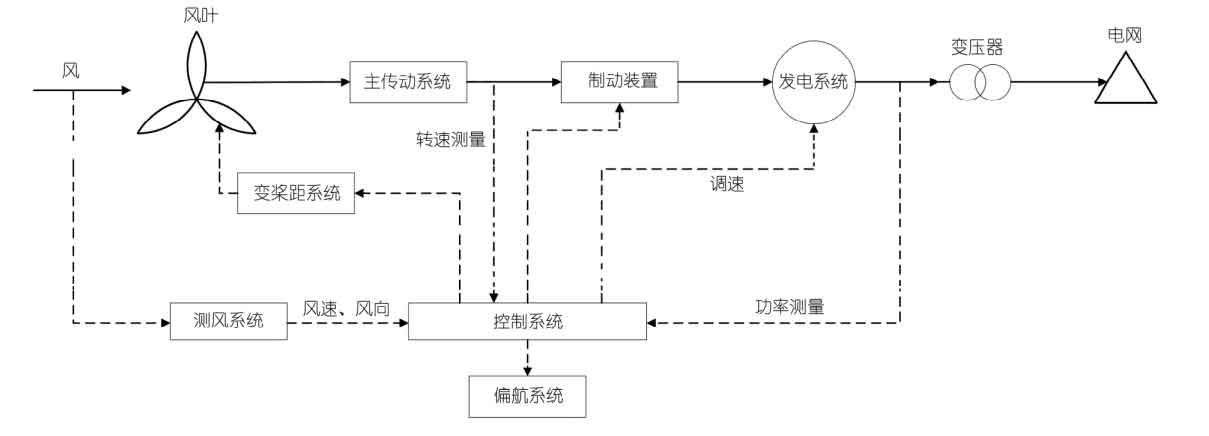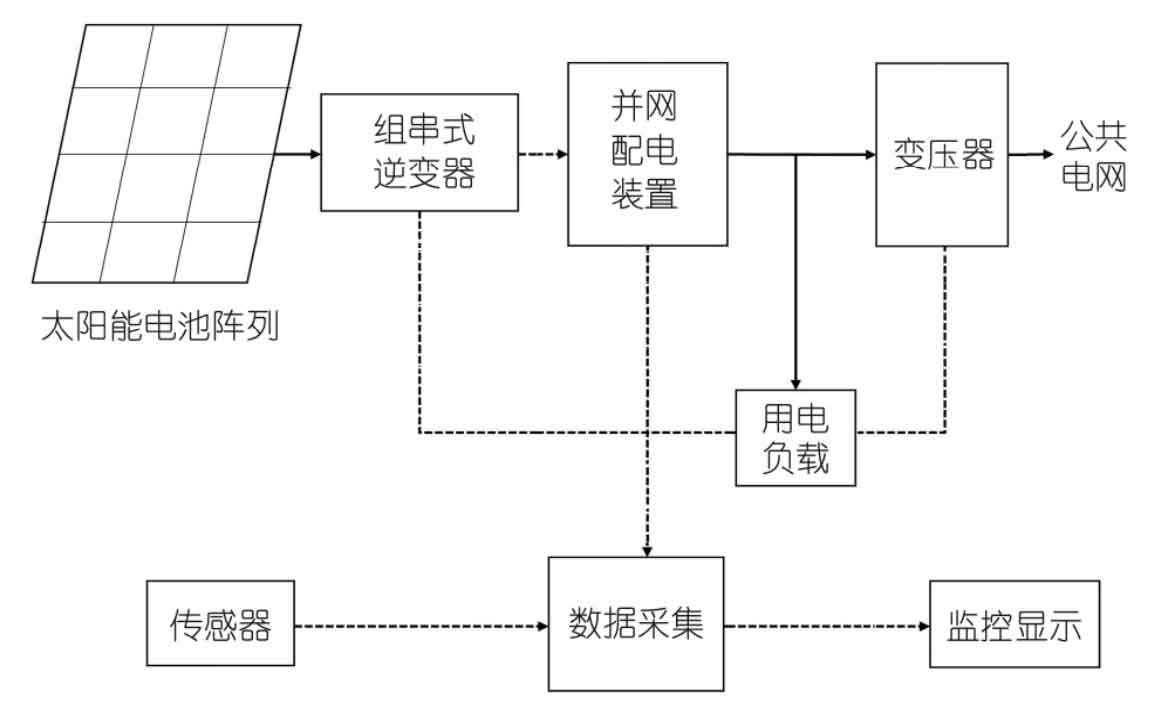With the proposal of the dual carbon goals of peaking carbon emissions and achieving carbon neutrality, the construction of green automated ports has become a major trend in global port development. Many automated container ports in China have introduced renewable energy, such as the construction of a distributed electric field with 9 wind turbines in Jiangyin Port; The Qianwan Container Terminal of Qingdao Port has successfully installed solar photovoltaic lighting devices and photovoltaic power generation systems; The introduction of photovoltaic power generation systems in Xiamen Port has effectively reduced carbon emissions levels. In response to the policy of energy conservation and carbon reduction, it is particularly necessary to reform the energy supply structure of ports and increase the proportion of renewable energy. Therefore, the focus is on studying the feasibility of applying wind and photovoltaic power generation in ports to promote energy conservation and emission reduction, providing reference for similar ports.
1. Introduction to wind and photovoltaic power generation
To deepen the energy supply side reform, ports face the following challenges: firstly, currently, ports mainly rely on traditional energy in energy supply, so it is necessary to optimize the energy supply side structure of ports and increase the proportion of renewable energy; Secondly, with the continuous deepening of green port construction, the coordination and management of automated container terminal business are difficult to integrate, information is not shared, and standards are not unified, which will lead to energy waste in ports.
Wind power and photovoltaic, as the two most mature renewable energy sources, have environmental and economic characteristics. Integrating them organically into the port energy supply system can effectively optimize the port energy supply structure, promote regional environmental protection, and further move towards a “zero carbon port”.
1.1 Principles and System Composition of Wind Power Generation
The principle of wind power generation is as follows: the wind blows through the blades to form a pressure difference between the front and back surfaces, which generates lift, causing the blades to rotate continuously and cross cut the airflow. The rotational motion of the wind blades is transmitted to the power generation system in the engine room through gears, thereby driving the generator to generate electricity. Finally, the transformer lifts the voltage of the generator to the distribution network for transmission (see Figure 1).

The wind blade is the part in the power generation system that comes into direct contact with the wind. The wind blows through the blade to form mechanical energy, which is then transmitted to the main shaft through the hub. The main transmission system is a very important subsystem in the wind power generation system, mainly responsible for directly transmitting the mechanical energy of the wind blades to the subsequent braking device and power generation system. The function of the yaw system is to drive the engine compartment to rotate, and its position is between the tower and the engine compartment. The yaw system and power generation control system cooperate with each other to enable the blades to rotate continuously and normally, thereby improving the utilization and efficiency of wind energy in the power generation system.
1.2 Principle and System Composition of Photovoltaic Power Generation
Photovoltaic power generation is a technology that utilizes the effect of semiconductor interface photoelectricity to directly convert light energy into electrical energy. Solar photovoltaic is converted into direct current through a battery array, which is then converted into lower voltage alternating current through an inverter. It is then converted into alternating current that meets the voltage requirements of the power system through a step-up transformer and connected to the user’s power system. The composition of the photovoltaic power generation system is shown in Figure 2.

Solar photovoltaic cell arrays, also known as photovoltaic modules, are the fundamental units of photovoltaic power generation systems. Photovoltaic modules are composed of multiple photovoltaic cell blocks connected in series or parallel. When exposed to sunlight, the special materials on the module panel will generate photoelectric effects, creating a voltage drop at both ends of the panel, generating current, and ultimately generating electricity.
The function of a string inverter is to convert the direct current generated by the photovoltaic module panel into alternating current. The transformer will appropriately boost the AC power converted by the inverter and deliver it to the corresponding power grid. Photovoltaic power generation requires the selection of appropriate transformers to have certain low voltage ride through capabilities and good impedance economic operation characteristics, ensuring the safe and stable operation of large photovoltaic power plants.
2. Application and Case Analysis
Taking the automation terminal of Tianjin Port Section C as a case study, this paper analyzes the feasibility of constructing wind and photovoltaic power generation projects in the port from three aspects: project feasibility, profitability, and social benefits, and provides statistical data for practical application.
2.1 Analysis of Wind Power Projects in Port Construction
2.1.1 Constructability of wind power projects
(1) Wind energy resources in the port area. By collecting wind data from the wind measurement tower 1601 # near the Tianjin Port area and meteorological data from MERRA2 at coordinates N39.0 ° and E117.5 °, it is determined that the wind power level of the wind farm is level 1, the IEC level is level III, and the wind resources are relatively good.
(2) Engineering geology. The engineering area is located in the northeastern part of the North China subsidence zone and the northern part of the Huanghua Depression structure in the first level subsidence zone. According to relevant data analysis, there have been no obvious signs of geological activity in the area since the middle and late stages, and there have been no observed active faults passing through the site and adjacent areas. Therefore, the proposed wind farm belongs to a relatively stable construction site.
(3) Project scale. According to the socio-economic development and power system development plan of the region where the wind farm is located, as well as the requirements for wind farm construction conditions and wind energy resource development and utilization, the main task of this wind farm is to generate electricity.
The project adopts a direct power supply construction mode of “spontaneous self use full consumption”, using two wind turbines with a single unit capacity of 4500 kW. The turbine hub height is 110 meters, the impeller diameter is 155 meters, and the total installed capacity is 9 MW.
2.1.2 Profitability of Wind Power Projects
By calculating the financial cash flow of the entire investment and capital of the project, it can be concluded that the Tianjin Port C-section automated terminal wind power project, while meeting the loan repayment requirements, controls the operating period grid electricity price to be 0.517 4 yuan/kWh. The estimated internal rate of return on all investment is 6.44%, and the internal rate of return on self owned funds is 8.39%, which is higher than the bank loan interest rate. The total investment return rate is 4.74%, the net profit margin of project capital is 12.17%, and the investment payback period is 12.02 years. Based on this analysis, this project has a certain level of profitability.
According to the characteristics of the project, when the uncertainty factors such as fixed assets investment, effective electricity, electricity price and interest rate are measured and measured separately, the sensitivity analysis is carried out on the impact of the financial internal rate of return of the project, the internal rate of return of capital fund and the investment payback period, and it is concluded that the project has a certain degree of financial risk resistance.
2.1.3 Social benefits of wind power projects
The installed capacity of this wind farm project is 9 MW, which can provide 18 million kWh of electricity to the power grid annually. Compared with coal-fired power plants, based on the consumption of 315 g/kWh of standard coal for power generation, it can save 5700 tons of standard coal annually and reduce the emission of a large amount of atmospheric pollutants, thereby contributing to the improvement of atmospheric environmental quality.
2.2 Analysis of Photovoltaic Power Generation Projects in Port Construction
2.2.1 Constructability of photovoltaic power generation projects
(1) Solar photovoltaic resources. Through software calculations, it was found that the annual average solar radiation of the photovoltaic power station at the automated terminal of Tianjin Port Section C is about 4804.2MJ/m2, and the daily average horizontal radiation is about 3.68 kWh/m2. According to the “Solar Energy Resource Assessment Method”, this area belongs to the solar photovoltaic resource rich zone, and the resource area is classified as a Class II area.
(2) Engineering geology. Tianjin Port is located in the Bohai Bay in the east of Tianjin Binhai New Area and in the east of North China Plain. The annual average temperature is 12.6 ℃, and the annual average precipitation is 566.0 mm. The precipitation varies significantly with the seasons, with less in winter and spring, and more concentrated in summer. This area belongs to a relatively stable tectonic zone with weak tectonic activity, making it suitable for the construction of photovoltaic power stations.
(3) Project scale. The photovoltaic project is mainly focused on power generation, with a planned total installed capacity of 1.5 MWp. It is planned to install 2746 monocrystalline silicon photovoltaic modules with a nominal power of 555 Wp, and the actual installed capacity is 1.524 03 MWp.
2.2.2 Profitability of photovoltaic power generation projects
The total static investment of the project is 6.87 million yuan, with a static investment of 4506 yuan/kW per kilowatt. The loan interest rate during the construction period is 4.9%. The self use electricity price of this project is temporarily calculated at 0.667 yuan/kWh before tax and 0.365 yuan/kWh for grid electricity (with a consumption ratio of 95%). The financial internal rate of return on investment for the project is 13.22% after tax, with a payback period of 7.68 years. The financial internal rate of return on capital is 13.22%. The above financial evaluation results indicate that this project is financially feasible, economically advantageous, and can drive local economic development, with certain economic benefits.
2.2.3 Social benefits of photovoltaic power generation projects
The construction of this power generation project will promote the development of local related industries, and play a positive role in expanding employment and developing the tertiary industry. The development of this power generation project can also effectively supplement the energy supply in the region. Photovoltaic power generation, as green energy, is conducive to alleviating the environmental protection pressure in the region.
3. Actual application effect
Since its 100 day operation, the project has been running for approximately 2000 hours, generating approximately 5.592 million kWh of electricity, saving approximately 1677 tons of standard coal, and reducing carbon dioxide emissions by over 6000 tons. During this period, the cumulative electricity consumption of the terminal was about 5.117 million kWh, which is lower than the power generation of the smart green energy system. The energy consumption decreased by 17% compared to traditional automated container terminals, truly achieving 100% energy consumption at the terminal from green electricity, and achieving zero carbon dioxide emissions on both sides of energy production and consumption.
4. Conclusion
By analyzing the power generation principles of wind and photovoltaic power generation, the roles of the two in green port construction were explored, and the feasibility of wind and photovoltaic projects in port construction was verified through practical cases. The construction of wind power and photovoltaic systems can reduce the energy consumption cost of ports, optimize the energy supply side structure of ports, and have a positive effect on promoting green port reform.
